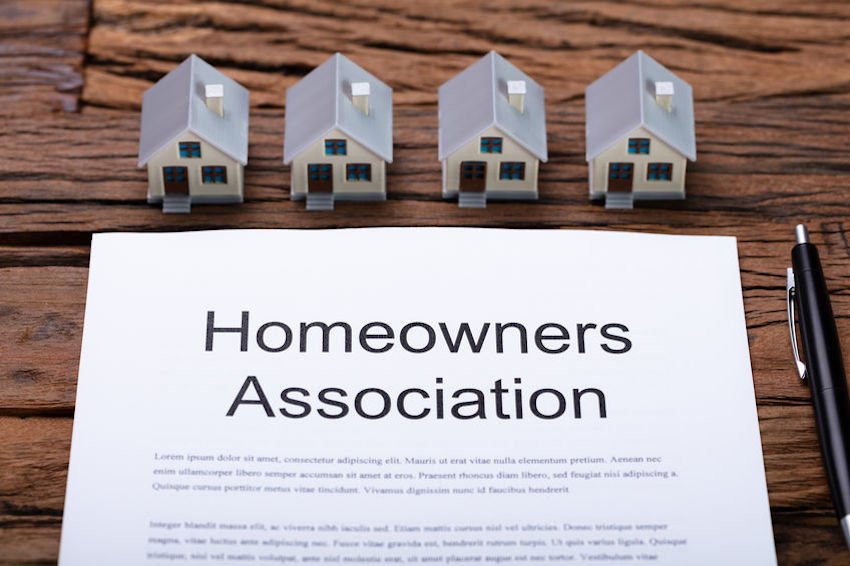The Function of an HOA in Establishing and Enforcing Area Standards for Citizens
The duty of a Homeowners Association (HOA) in enforcing and developing neighborhood guidelines is basic to keeping a orderly and natural household atmosphere - hoa condo. By formulating clear rules that regulate aspects such as property maintenance and area conduct, the HOA not just sets standards for locals but also cultivates a sense of belonging and accountability. The application of these guidelines can offer numerous difficulties, elevating inquiries concerning communication, neighborhood, and fairness interaction. As we explore these intricacies, it ends up being apparent that the influence of an HOA extends far past plain guideline enforcement.
Understanding House Owners Associations
Homeowners organizations (HOAs) offer as regulating bodies for property neighborhoods, playing an essential role in maintaining building values and cultivating a sense of neighborhood. Usually created by designers, HOAs are made up of house owners within a designated area who choose a board to supervise the association's tasks. The key functions of an HOA consist of applying community rules, handling typical locations, and organizing community occasions.
HOAs operate under a set of governing files, consisting of covenants, problems, and limitations (CC&R s), which outline the rights and duties of house owners. These laws aim to guarantee that homes are preserved to a certain criterion, thus protecting the visual charm and overall worth of the community. Additionally, HOAs typically collect dues from property owners to money upkeep, landscape design, and other neighborhood solutions.
The presence of an HOA can substantially influence the living experience within an area (hoa condo). While some homeowners value the structured setting and features provided, others may discover certain laws restrictive. Stabilizing the passions of all homeowners is vital for an HOA to work effectively, making sure that it offers its intended objective of improving community living while appreciating individual homeowner rights
Developing Community Guidelines

To start, an HOA needs to carry out studies or convene that allow locals to articulate their worries and suggestions. This participatory procedure cultivates a feeling of possession and boosts compliance. Next off, the HOA board need to evaluate the responses to determine common themes and top priorities that warrant formal addition in the guidelines.
It is additionally vital to guarantee that the standards are clear, concise, and quickly comprehended. Uncertainties can cause misconceptions and conflicts, weakening the function of the guidelines. Furthermore, the guidelines should be detailed, covering different elements of community living, consisting of home upkeep, noise degrees, and use of common areas.
Enforcement of Regulations
Efficient enforcement of area policies is essential for preserving order and ensuring that all citizens adhere to the established standards. An HOA should execute a structured technique to enforce these policies, which commonly includes a combination of surveillance, interaction, and penalties for non-compliance.
First, regular inspections and neighborhood patrols can aid identify violations, making sure that rules are continually applied across the area. This positive tracking allows the HOA to deal with problems before they intensify, cultivating a sense of liability among homeowners.
Second, clear my response communication is essential. Homeowners should be notified of the guidelines and the treatments for reporting offenses. An open line of interaction motivates locals to voice worries and seek clarification on standards, which can boost conformity.
Lastly, when offenses take place, the HOA needs to apply effects as outlined in the regulating papers. By successfully enforcing regulations, an HOA can cultivate an unified living environment that mirrors the collective values of its homeowners.
Advantages of HOA Rules
Countless advantages emerge from the application of HOA guidelines, which serve to enhance the high quality of life within a community. One primary advantage is the maintenance of building values. By imposing requirements for aesthetics and upkeep, HOAs guarantee that homes and usual locations continue to be appealing, fostering a preferable living setting that can cause enhanced property values gradually.
In addition, HOA guidelines advertise consistency and uniformity within the area. This comprehensibility in design and maintenance assists to produce a sense of belonging among citizens, adding to area pride and a favorable ambience. In addition, developed standards facilitate problem resolution among next-door neighbors by providing clear expectations and methods for actions, consequently lessening conflicts.
An additional significant benefit is the provision of common facilities and solutions. Numerous HOAs handle community centers such as parks, pools, and clubs, which boost entertainment possibilities for residents. These services not just improve the lifestyle yet likewise encourage social communication.
Ultimately, the guidelines stated by an HOA cultivate an efficient, harmonious community, making sure that homeowners appreciate a high standard of living while promoting a helpful environment for all homeowners.
Usual Obstacles Faced by HOAs
Amidst the benefits that house owners associations (HOAs) can provide, they likewise come across a variety of obstacles that can hinder their effectiveness. One substantial concern is the absence of resident interaction. you can try here Many property owners may not take part in meetings or neighborhood tasks, causing a disconnect between the HOA board and citizens. This disengagement can result in misunderstandings concerning community guidelines and a lack of support for enforcement efforts.
Disputes can arise when citizens really feel that enforcement is inconsistent or prejudiced, possibly leading to conflicts within the area. Additionally, HOAs commonly deal with monetary restraints, which can limit their capability to maintain usual locations or fund neighborhood projects.
Additionally, browsing legal complexities can be intimidating for HOAs. Evolving and changing demographics area needs require HOAs to adjust their standards, usually meeting resistance from enduring locals that are accustomed to traditional norms.
Final Thought

By developing clear rules that control aspects such as residential or commercial property upkeep and community conduct, the HOA not only establishes requirements for homeowners but additionally fosters a feeling of belonging and liability.Homeowners organizations (HOAs) offer as regulating bodies for domestic neighborhoods, playing a critical function in keeping residential property values and promoting a feeling of neighborhood. Many home owners might not participate in conferences or area tasks, leading to a detach between the HOA board and residents. Advancing and altering demographics area needs need HOAs to adapt their guidelines, typically fulfilling resistance from enduring locals that are accustomed to traditional standards. Via the advancement of clear laws and consistent enforcement, Look At This HOAs promote building upkeep, area satisfaction, and depend on amongst locals.
 Alicia Silverstone Then & Now!
Alicia Silverstone Then & Now! Barret Oliver Then & Now!
Barret Oliver Then & Now! Daniel Stern Then & Now!
Daniel Stern Then & Now! Katie Holmes Then & Now!
Katie Holmes Then & Now! Ricky Schroder Then & Now!
Ricky Schroder Then & Now!